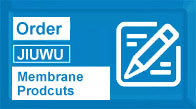With the continuous improvement of residents' living standards and the increasing awareness of environmental protection, people's requirements for the discharge of domestic wastewater and industrial wastewater have gradually increased, and the requirements for the use of drinking water have also become increasingly stringent. Unconventional water sources have also been developed, and new technologies are gradually emerging in the water treatment industry. The main technologies for water treatment in the market are ultrafiltration membranes and reverse osmosis membranes: ultrafiltration membranes have limited interception and cannot filter out heavy metals and scale.
Population growth and water environment pollution have intensified the water resource crisis, seriously affecting the health and sustainable development of the economy and society, and becoming one of the main problems facing the 21st century. With the improvement of people's living standards, the requirements for the quality of drinking water have gradually increased, and obtaining high-quality drinking water is an urgent need of the people. Compared with traditional water treatment processes, membrane technology has the advantages of small footprint, high processing efficiency, and good water quality of effluent, and has attracted much attention in the fields of water treatment and water reuse.
Nanofiltration can achieve efficient interception of multivalent salts and organic pollutants in water, but has relatively low interception rate for monovalent salts, thus having the characteristic of selective separation of monovalent and multivalent salt mixed systems. Compared with reverse osmosis,nanofiltration membrane has the advantage of low energy consumption, and has been widely used in seawater desalination, drinking water treatment, water reuse, industrial wastewater treatment, etc. The pore size of nanofiltration membrane is between reverse osmosis membrane and ultrafiltration membrane, with a relatively high water permeability of 5-20 L/(m3·h·bar). Compared with reverse osmosis membrane, nanofiltration membrane can achieve an interception rate of more than 90% for divalent and multivalent ions, and an interception rate of 10% to 90% for monovalent salts.
As a currently competitive industrial separation and water treatment technology, nanofiltration membrane technology is highly consistent with China's current advocacy of building an energy-saving and emission-reduction society, committed to clean production, developing a circular economy, and achieving sustainable development. It has a wide range of application space and development prospects. It is estimated that by 2023, the size of China's nanofiltration membrane industry market will reach 11.265 billion yuan, and the compound annual growth rate will exceed 18%.
Due to its physical separation, high and stable effluent water quality features, nanofiltration membrane is becoming one of the mainstream technologies in the field of water treatment. In recent years, the market capacity of China's membrane industry has reached 172 billion yuan, and although nanofiltration accounts for less than 3% of the market share, its growth rate is faster, with a compound annual growth rate of 15.76%.




 +86-25-58849045
+86-25-58849045
 +86-25-58749295
+86-25-58749295
 jiuwu@jiuwu.com
jiuwu@jiuwu.com
 No. 9 Park Road, Pukou District, Nanjing City (Sanqiao Factory)
No. 9 Park Road, Pukou District, Nanjing City (Sanqiao Factory) Call us on:
Call us on:  Email Us:
Email Us:  No. 9 Park Road, Pukou District, Nanjing City (Sanqiao Factory)
No. 9 Park Road, Pukou District, Nanjing City (Sanqiao Factory)

 English
English 한국어
한국어 français
français русский
русский Español
Español

